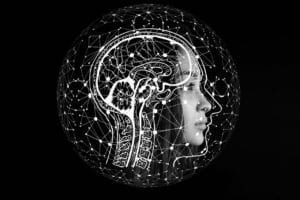Chiari Malformation
What is Chiari malformation?
Chiari malformation is a rare condition characterized by brain tissue that extends into the spinal canal. It occurs when part of the skull is abnormally small or misshapen, pressing on the brain and forcing it downward. There are three types:- Chiari malformation type I, which develops as the skull and brain are growing and is the pediatric form of the disease
- Chiari malformation type II, which is present at birth (congenital)
- Chiari malformation type III, which is also present at birth (congenital) and is the rarest and most severe form of the disease
What are the symptoms of Chiari malformation?
In Chiari malformation type I, signs and symptoms usually appear during late childhood or adulthood.- Headaches, generally occurring after sudden coughing, sneezing or straining
- Neck pain
- Unsteady gait (problems with balance)
- Poor hand coordination (fine motor skills)
- Numbness and tingling of the hands and feet
- Dizziness
- Difficulty swallowing, sometimes accompanied by gagging, choking, and vomiting
- Vision problems (blurred or double vision) and speech problems, such as hoarseness
- Ringing or buzzing in the ears (tinnitus)
- Slow heart rhythm
- Scoliosis, related to spinal cord impairment
- Abnormal breathing, such as central sleep apnea, characterized by periods of breathing cessation during sleep
- Issues related to a form of spina bifida called myelomeningocele
- Changes in breathing pattern
- Swallowing problems, such as gagging
- Quick downward eye movements
- Weakness in arms
What causes Chiari malformation?
Chiari malformation type I occurs when the section of your skull containing a part of your brain (cerebellum) is too small or is deformed, thus putting pressure on and crowding your brain. The lower part, or tonsils, of the cerebellum are displaced into your upper spinal canal. Chiari malformation type II is nearly always associated with a form of spina bifida called myelomeningocele.How is Chiari malformation diagnosed?
A thorough examination, a review of medical history, and observation of the characteristics of Chiari malformation can lead to a diagnosis. Imaging tests, such as a MRI, X-ray, and CT scan can help confirm the diagnosis.What are the available treatments for Chiari malformation?
The symptoms of Chiari malformation can be treated, but the disorder itself cannot yet be cured. Surgery is the most common treatment, specifically posterior fossa decompression to relieve pressure from the brain. A shunt insertion can also be used to drain excessive fluid from the skull and brain.Where can I find out more about Chiari malformation?
Chiari Malformation Articles

Chiari Malformation: Community Brings Christmas Parade to 7-Year-Old’s Door
James Moore
December 25, 2023
Read More »






Community Brings Christmas Parade to 7-Year-Old Girl’s Door
Patient Worthy Contributor
December 18, 2020
Read More »

ICYMI: Florida Clock Tower Lights Purple for Chiari Malformation Awareness
Patient Worthy Contributor
October 21, 2020
Read More »




